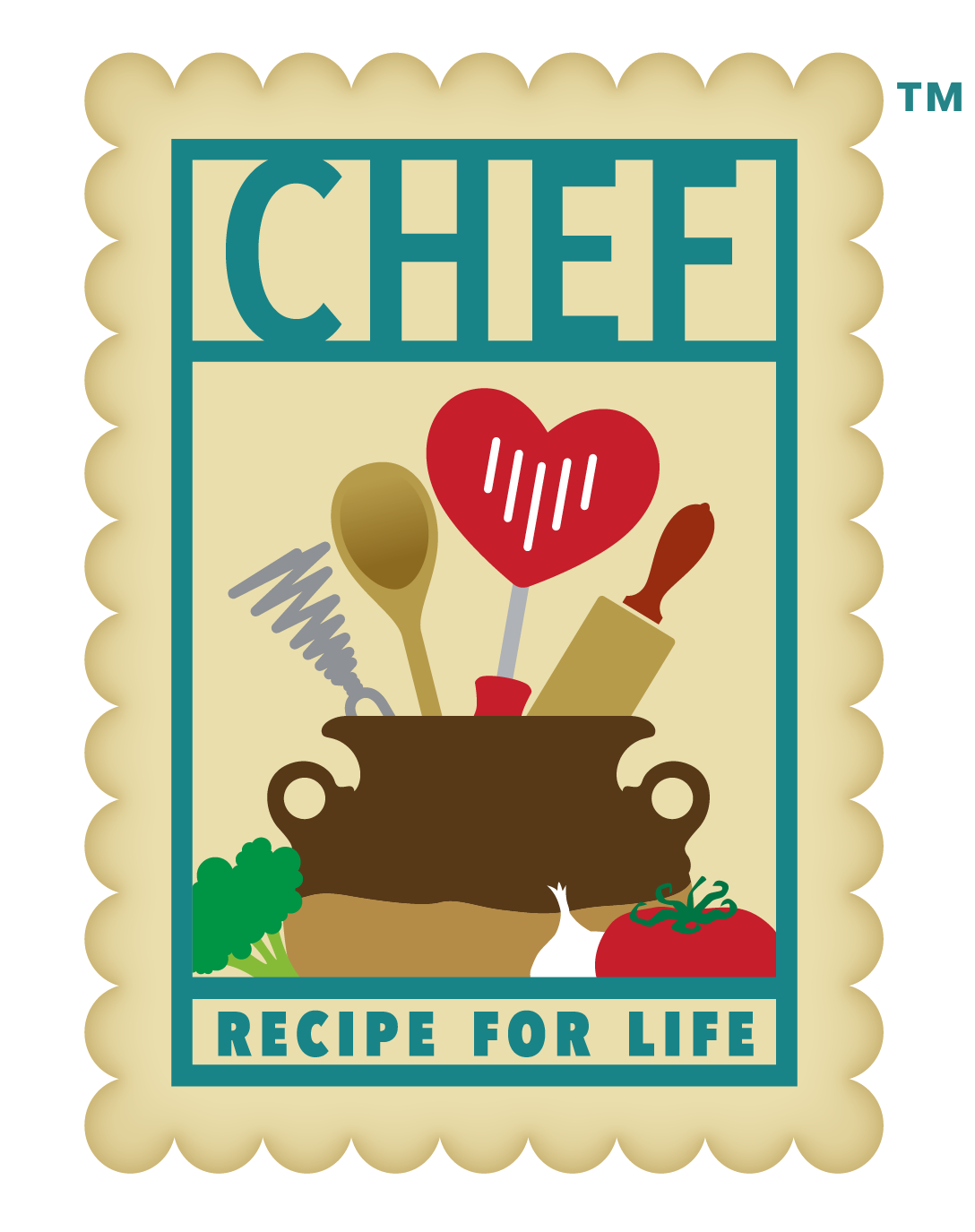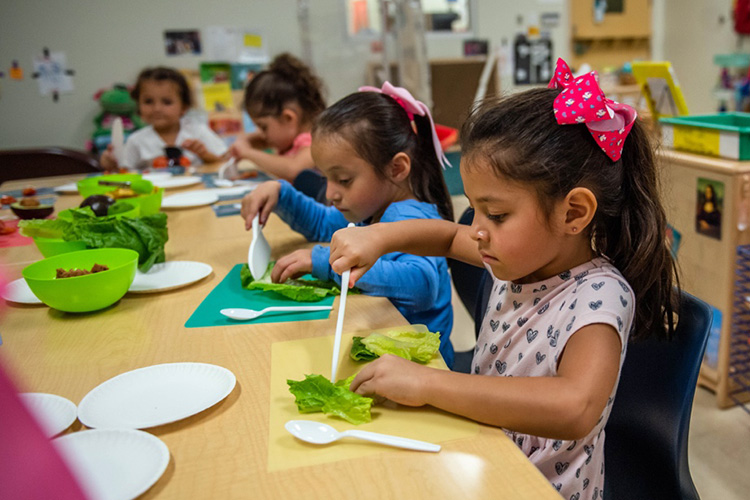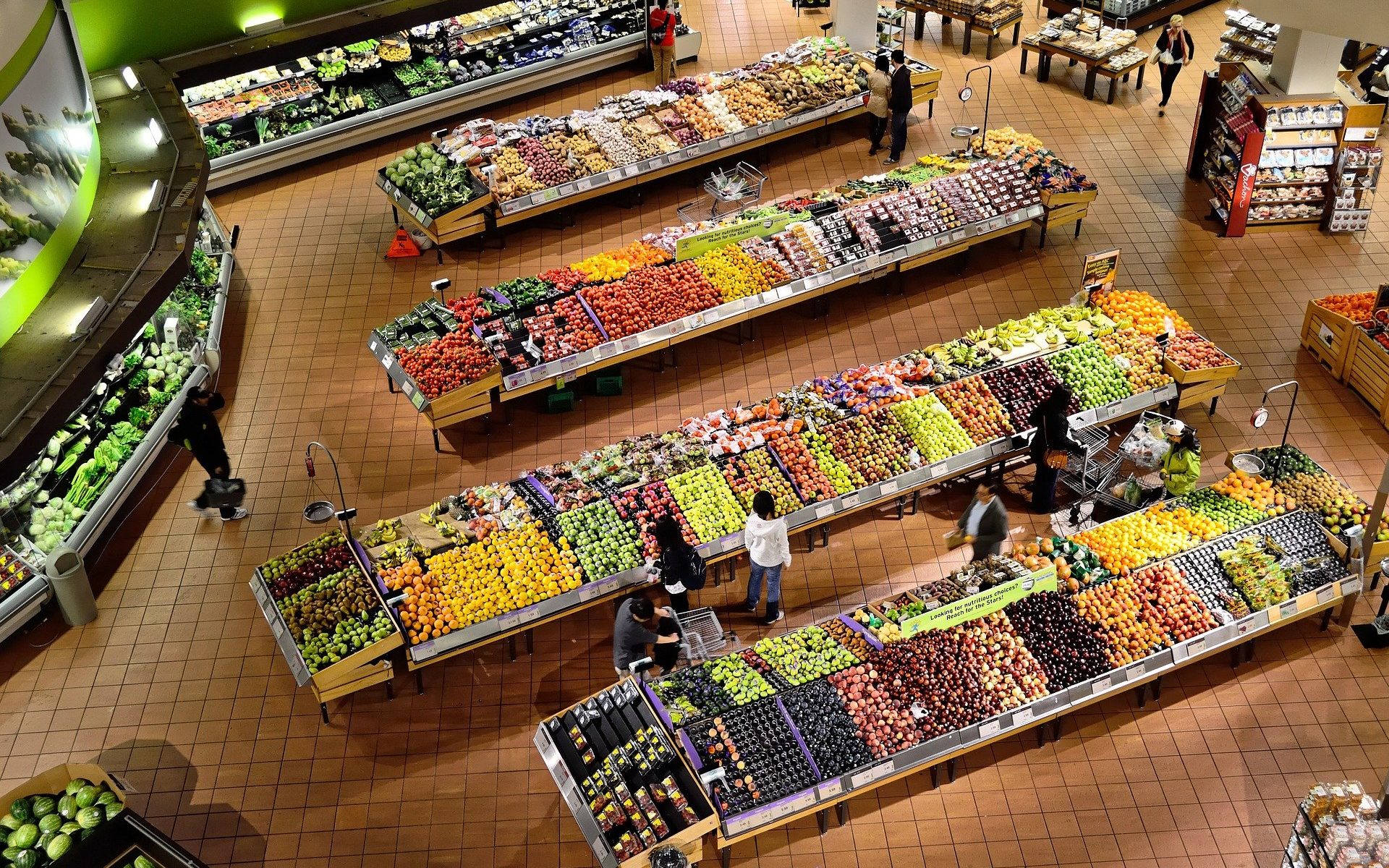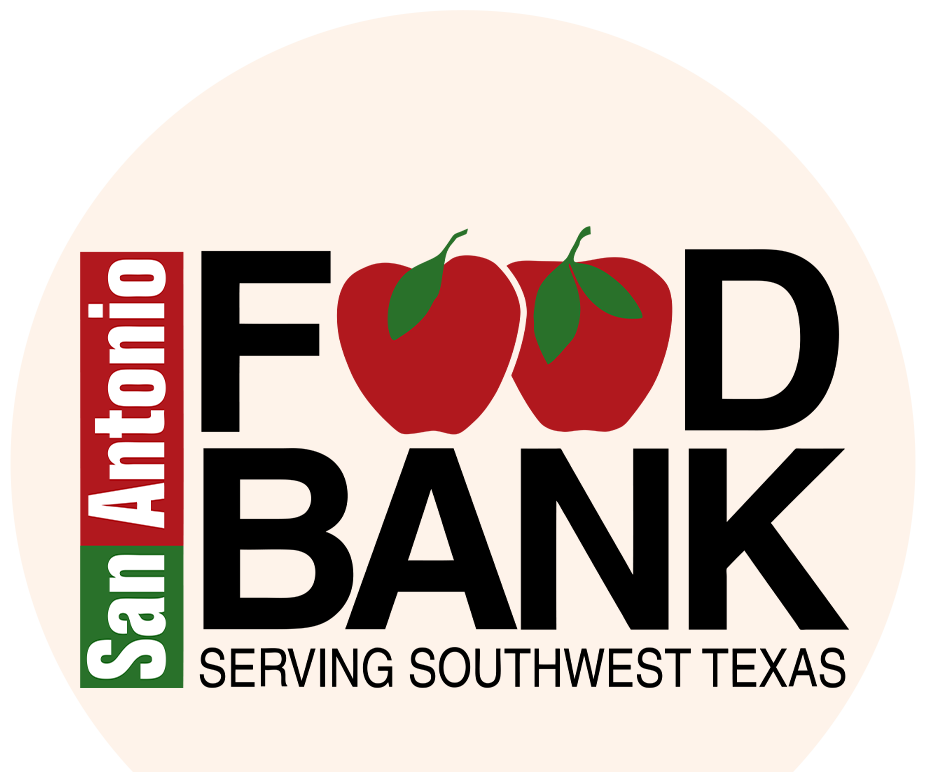Written by Pre-K 4 SA
For many families, there may be an endless struggle at the dinner table to have children eat all of their fruits and vegetables.
However, Pre-K 4 SA is trying to change the evening argument by showing young children the importance of nutrition by having them grow fruits, vegetables and herbs in their very own garden.
For many years, Pre-K 4 SA has had gardens for its classes. However, last year, a Garden to Table program created by CHEF: Culinary Health Education for Families (CHEF) was introduced into Pre-K 4 SA’s curriculum. In this program, all classrooms are assigned a garden in their outdoor learning areas. Here, they plant seeds, then water, weed, and nurture their gardens until the students see the bounty of their efforts as the fruits, herbs, and vegetables sprout.
This academic year, the CHEF program was modified to meet Pre-K 4 SA’s high-quality standards and introduced to teachers. As of October, teachers are teaching basic nutrition and practical cooking skills to encourage healthy eating routines. Additionally, CHEF is collaborating with the San Antonio Food Bank in teaching the importance of nutrition to San Antonio’s youngest learners at Pre-K 4 SA.
“Health and nutrition have become an integral part of my life and sharing what I’ve learned has become my goal,” said Julie Taylor, CHEF instructional specialist. “CHEF has allowed me to bring knowledge to young children through hands-on, meaningful activities that teach basic nutrition and practical cooking skills.
CHEF’s mission is “rooted in the belief that food is medicine.” The organization’s ultimate goal is to motivate individuals and communities to adopt and sustain healthier eating habits.
In San Antonio, CHEF is known through its collaborations with the Children’s Hospital to educate and heal patients and families. CHEF actively trains and certifies healthcare providers in culinary medicine and performs clinical research to measure the efficacy of the CHEF protocol in an acute care setting. Representatives also teach nutrition in after school programs throughout the community.
Every month, a teacher from each classroom will choose a time, day and recipe for his or her class to prepare. In small groups of 10 students, the children will create a recipe by picking their ingredients from their gardens. Classroom-grown fruits, herbs and vegetables will be washed and prepared for recipes. Ingredients not on hand will be ordered from the San Antonio Food Bank.
One of the children’s favorite recipes is “confetti corn,” which has a variety of colorful vegetables such as cooked corn kernels, poblano peppers, carrots, green onions, and cilantro. To better guide the children in understanding the recipe, they are provided a recipe with pictures to help them distinguish between the vegetables.
Once the vegetables have been washed, teachers show their students how to properly hold and use their kid-safe knives and cutting boards for the cutting process. The children begin to carefully cut, cube and dice as they prepare their ingredients for the recipe at hand.
As part of high-quality standards, throughout the 20 to 30 minutes of building a recipe, teachers encourage students to assist their families in cooking at home. Children learn more about the five food groups and the importance of balanced meals and healthy food portions.
Teachers take the time to engage with the students and discuss their experience using new utensils, different tastes and textures of each ingredient, and the combined taste of ingredients. Teachers are encouraged to use culinary terms to help students expand their knowledge of nutrition.
As part of the CHEF program, parents are encouraged to volunteer in their child’s class to assist teachers and students. The added support by parents encourages them to learn more about nutrition and see firsthand what ingredients and recipes their children enjoy.
Children begin to understand that with practice, cooking becomes more fun. Recipes are seen as guidelines for creative and delicious meals. Pre-K 4 SA is happy to fully incorporate the CHEF program to instill balanced nutrition at a young age.
The CHEF program encompasses much more than just ingredients in recipes. As part of Pre-K 4 SA and its core curricular innovations, 4-year-olds are able to refine their motor skills and develop a new vocabulary that promotes stronger health outcomes for the child’s future.
To learn more about Pre-K 4 SA, visit: https://prek4sa.com/




